Bath
A year seems like a long time, but it is flying by. So we’re trying to take every opportunity to get out and see what there is to see.
A lot of people enjoy travel but don’t like the getting there. We like (almost) all of it–the airports, the train stations, the in-betweens as well as the destinations. We took the underground to Paddington station to catch our 90-minute Great Western train to Bath. As seems to often be the case on weekends, a few of the tube stations were closed due to engineering work–but figuring out an alternate route is easy thanks to Google Maps and helpful employees. I’m a little nervous on the tube, finding the spaces confined and worrying about being able to make a quick exit in case of emergency, but walking into a proper train station like Paddington always seems to take my breath away. The vaulted roofs, the signage and platforms, even the smell of diesel mean adventure and exploration and I love it even when I’m just walking through. And the train might just be my favourite way to travel, not least because I enjoy the people watching, listening to the conversations, wondering about where people live, what they do, and where they’re going. Plus there’s no worry about parking or traffic, you get to see the countryside and the backsides of the towns, and you usually arrive right in the middle of your destination.
If you’re traveling with a friend, the “two-together” railcard is a great deal. For £30 (plus the cost of ID photos from a nearby machine) we now have a card that gives us a 1/3 discount on almost any rail fares, as long as we are traveling together. It paid for itself on this one trip.
We emerged just a block from the pedestrianized main shopping streets. (Now this is my idea of shopping. No stuffy malls, no traffic, no parking. But I wasn’t going to waste a short visit by spending it in the stores!) Most of the city was built in the Georgian era (roughly 1714-1830), of cream colored Bath stone, and as a spa town it was a fashionable destination. Jane Austen lived there for five years; I was glad to have very recently read Persuasion with its astute descriptions of Bath’s extremely class-conscious social life.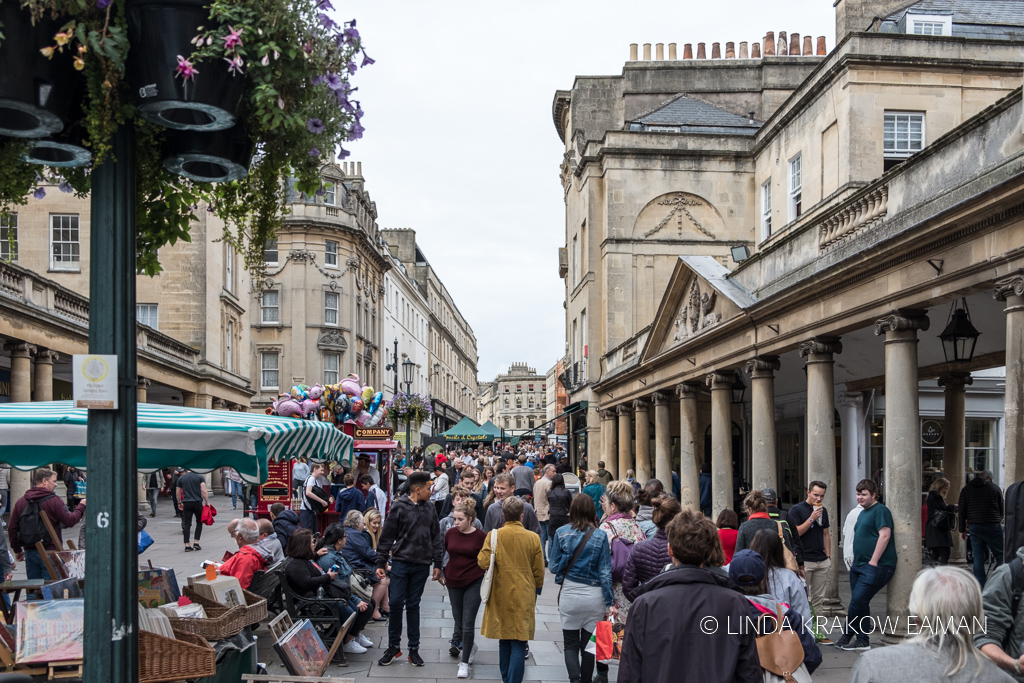
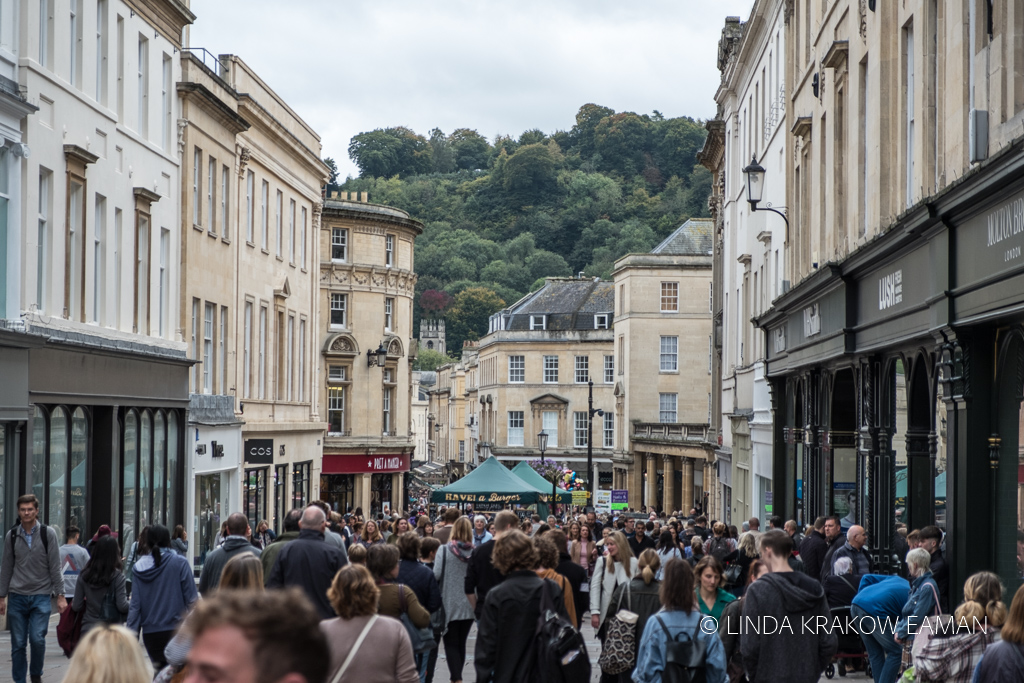
Our first visit was to the Roman baths for which the city is named. The tickets are a bit steep (£15.50 per person) but the experience is worth it. Around 60 AD the Romans discovered the hot springs and built a spa and temple here called Aquae Sulis; the exhibits make it easy to imagine what it was like in its heyday. It was fun to discover that some of the audio guide descriptions were recorded by Bill Bryson, an American author who has become a sort of favorite adopted son here. Since moving to London I’ve read several of his books as a way to familiarize myself with the local culture–they’re warm, funny, easy reads about living and traveling (mostly on foot, by bus and by train) in the UK. Hearing his voice here was a bit like listening to an old friend you’ve never actually met. And I wondered how many years I’d have to be here in order for my Canadian accent to take on a British edge, as his American one has.
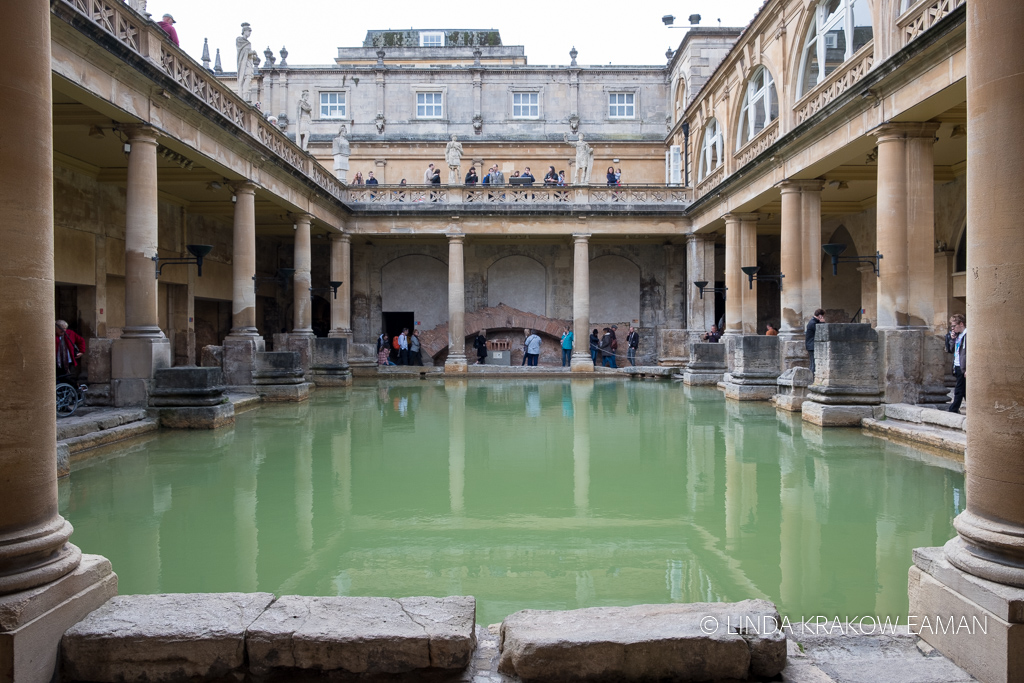
The largest of the baths, and the only one displayed with water in it. In Roman times it had a high, vaulted roof.
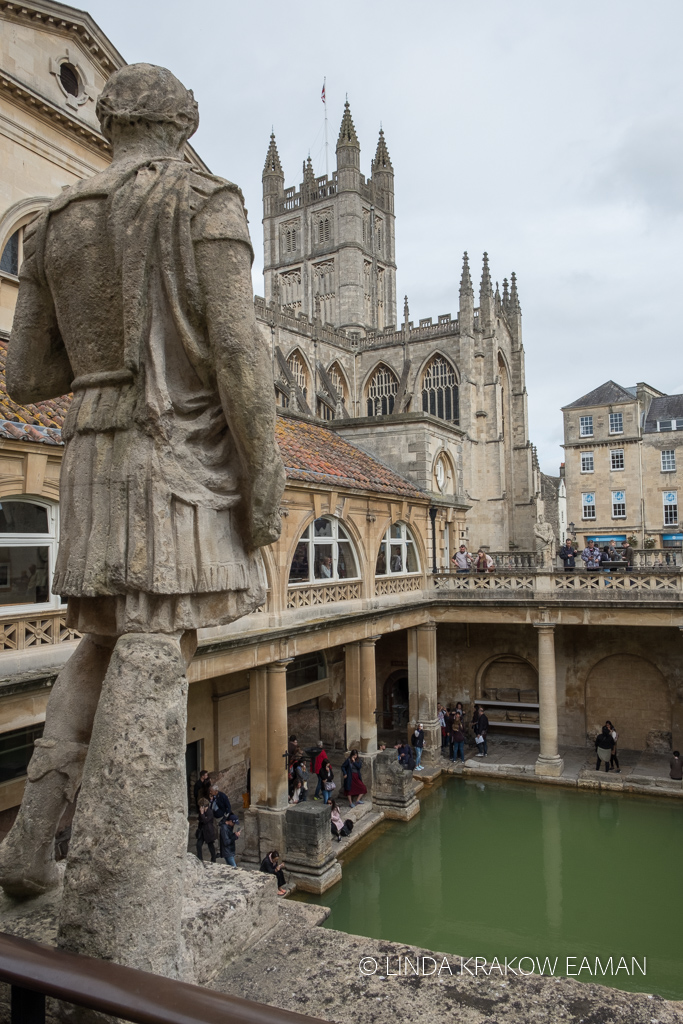
The statues on the 2nd level are Victorian, although the characters are Roman. I like the way they seem to be watching the goings-on below. You can see Bath Abbey in the background. Skies are gray… no sun on this weekend, but not much rain either so we weren’t complaining.
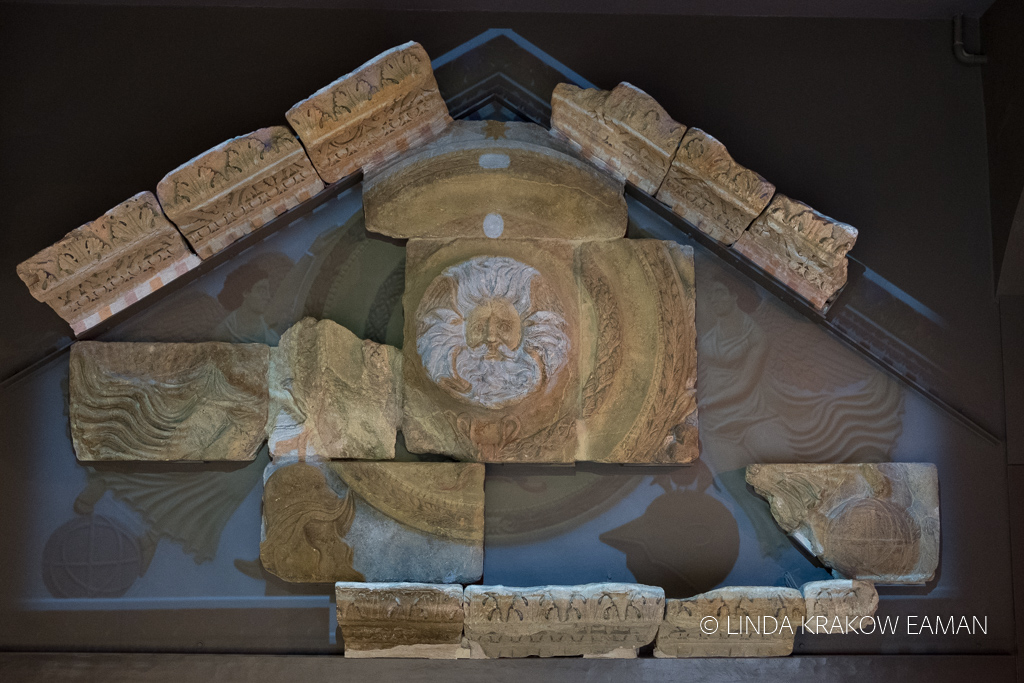
Remaining pieces of the Roman temple. The video projection, which slowly fades in and out, allows us to see what the full piece would have looked like.The figure in the middle, now often seen as a symbol of Bath, is a bit of an enigma. Neptune, perhaps?
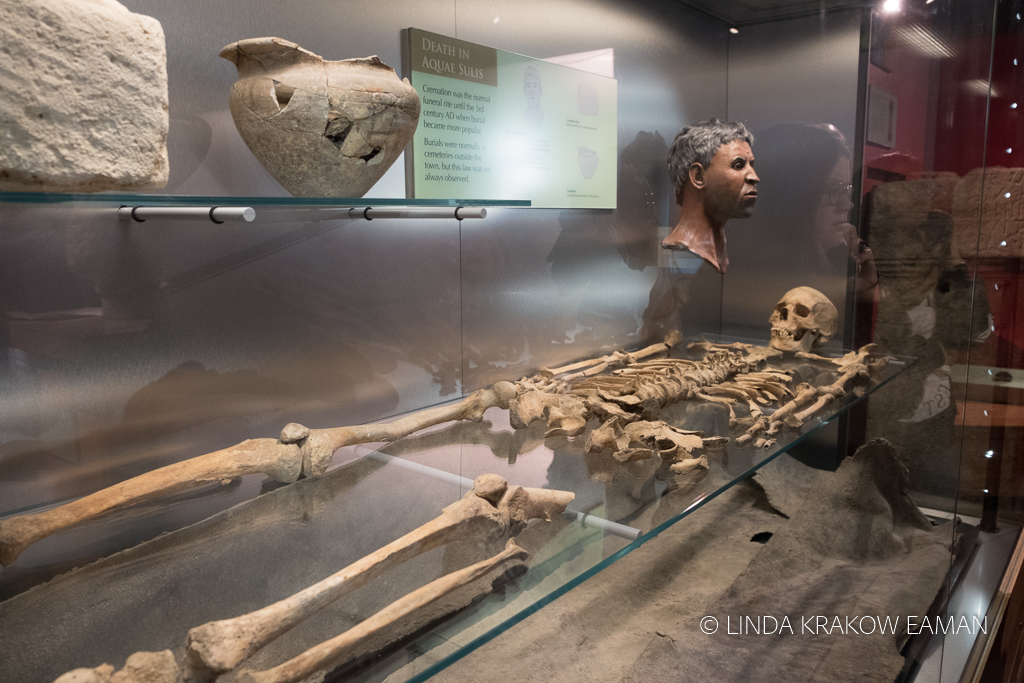
The remains of a visitor to Bath, including the lead lining of his coffin, and a reconstruction of his face. Among other things the exhibit also displayed coins–apparently the practice of throwing coins in the water goes back at least to the Romans–and small, intricately decorated stones thought to have washed loose from the rings of Roman bathers.
At the end of the tour there’s a tap pouring water from the spring, with paper cone cups for tasting. I recommend a SMALL taste. It’s not bad, but you can really taste the minerals, and it’s quite warm.
The Pulteney bridge dates from 1774, built to connect Bath with the newly constructed town of Bathwick. Perhaps influenced by the Ponte Vecchio in Florence, it has tiny shops lining both sides of it, including a few tiny cafés with tables for two overlooking the water.
Bath Abbey, next to the baths, dates back to 757 AD. The site first housed an Anglo-Saxon monastery, then a Norman cathedral, and finally the current church. It was damaged during World War II when the Germans bombed Bath as part of a campaign to destroy locations of cultural and historical value (the Bath Blitz), but amazingly even the huge stained glass window was repaired, mostly using the original glass. We discovered a free 5:00 pm organ recital and spent a lovely hour in the huge church. Organ music is a wonderful backdrop for a visit, and I took the opportunity to wander as I listened. Although I turned my camera shutter to “silent” mode and took some pictures in the back corners, in deference to the “no photography during concert” signs I didn’t take any pictures from behind the pews and forgot to go back around for one later! The organist was shown on large screens since the keyboard was out of sight of the audience in the pews. After each piece he would turn to the screen and acknowledge the applause; after the very last note he disappeared from the screen, and emerged in front of the audience a minute later to take a bow.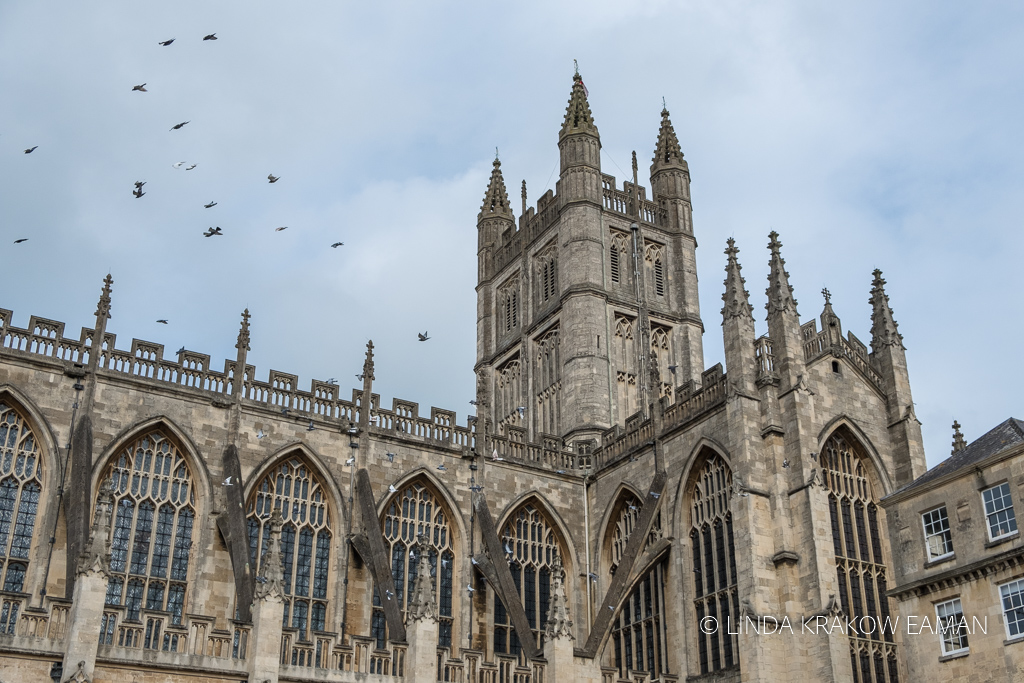
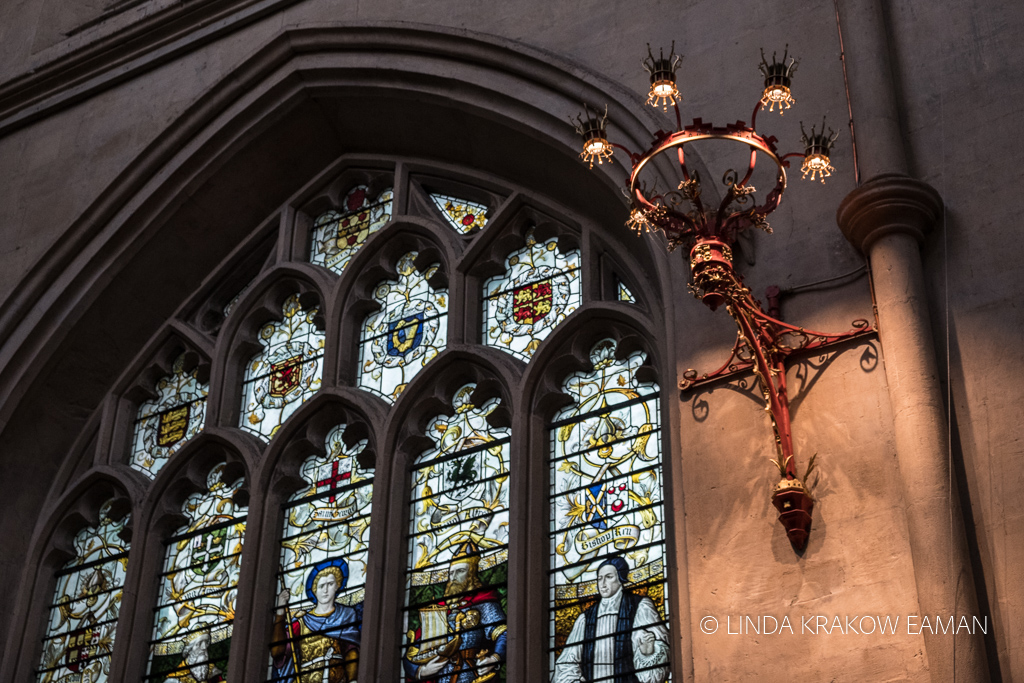
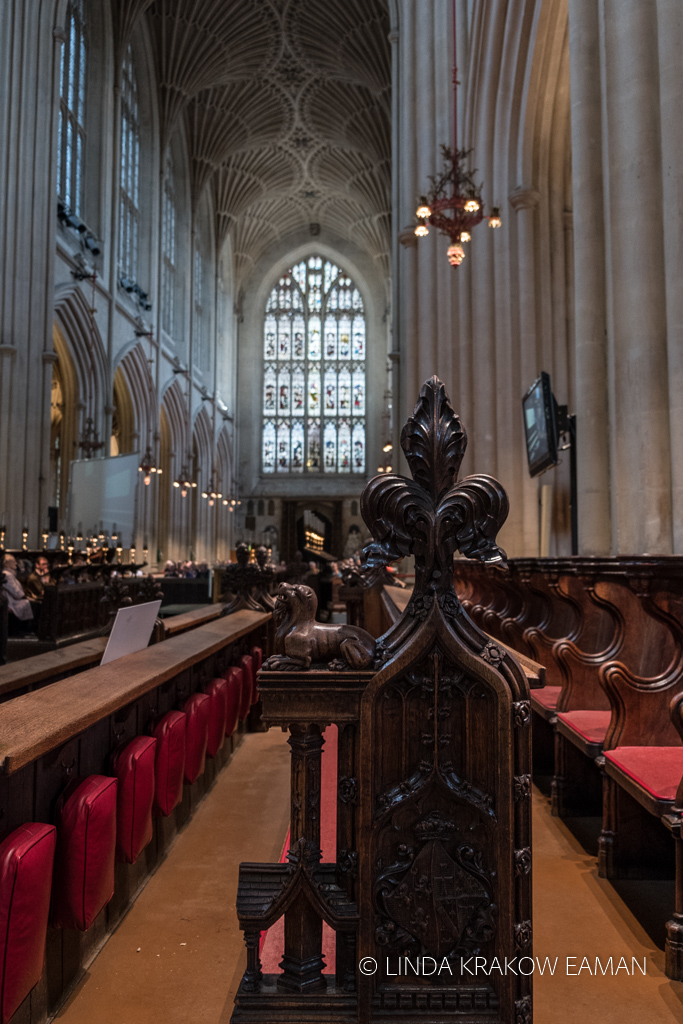 Amazing carvings in the choir
Amazing carvings in the choir
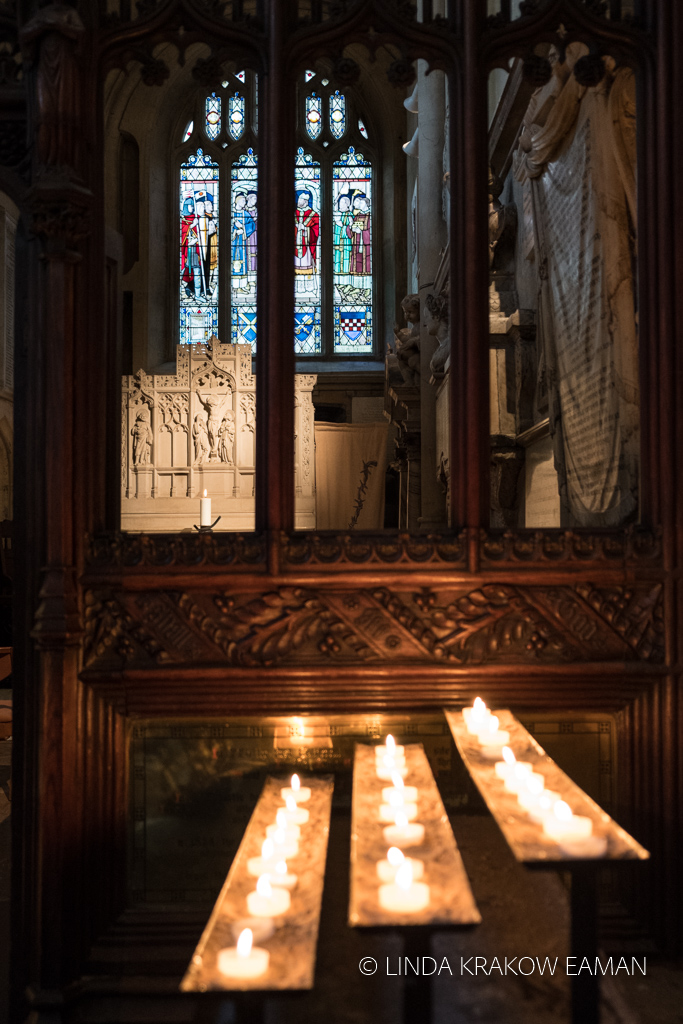
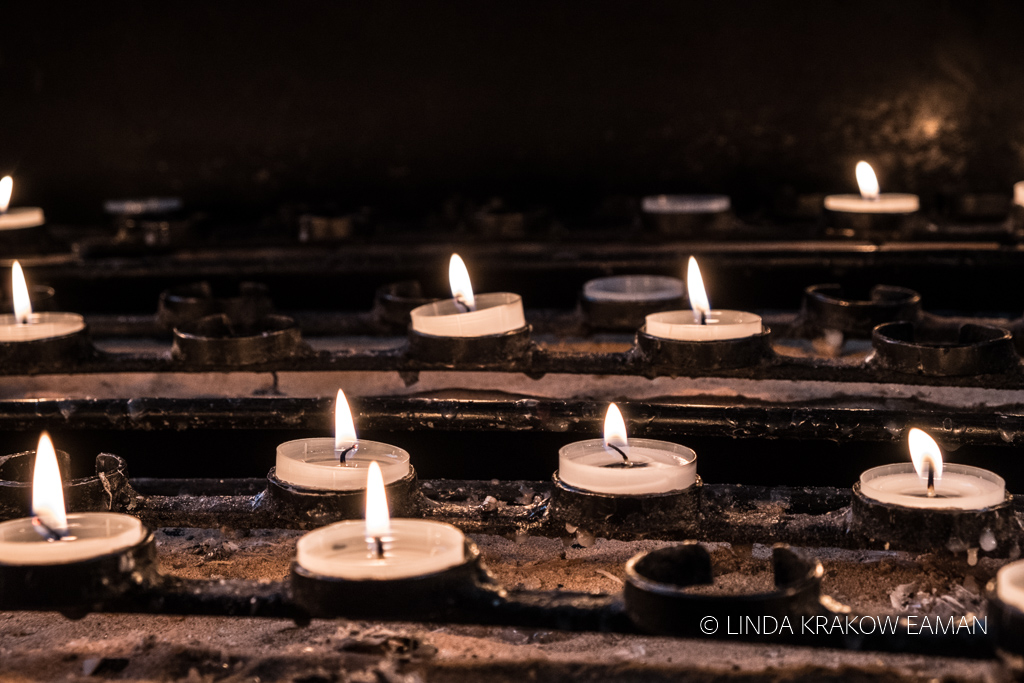
Bath would be an easy day trip from London; you could leave after breakfast, be back for dinner and still have time to see the major sights. But we like to take a little more time when we can, and it was nice to see the rainy streets after dark, head to our little inn, and enjoy a glass of wine in its pub instead of hopping back on the train right away.
The next morning we walked over to the famous Royal Crescent, considered one of the finest examples of Georgian architecture in the UK. Our roundabout route took us through the edge of Victoria Park, past a still sleeping circus, and around the back of the terraced houses (rows of attached houses, typically 3-4 stories high) that are everywhere here. The Crescent is impressive–a row of houses, in a perfect arc, on a hill overlooking a large green space. It was once 30 individual houses; today some are now apartments, one is a hotel, and one is set up as a museum. It’s easy to imagine what it would have been like in Jane Austen’s day, with horse drawn carriages bringing socialites to visit. I had hoped to visit the museum house, but it wasn’t open yet and we were hungry!
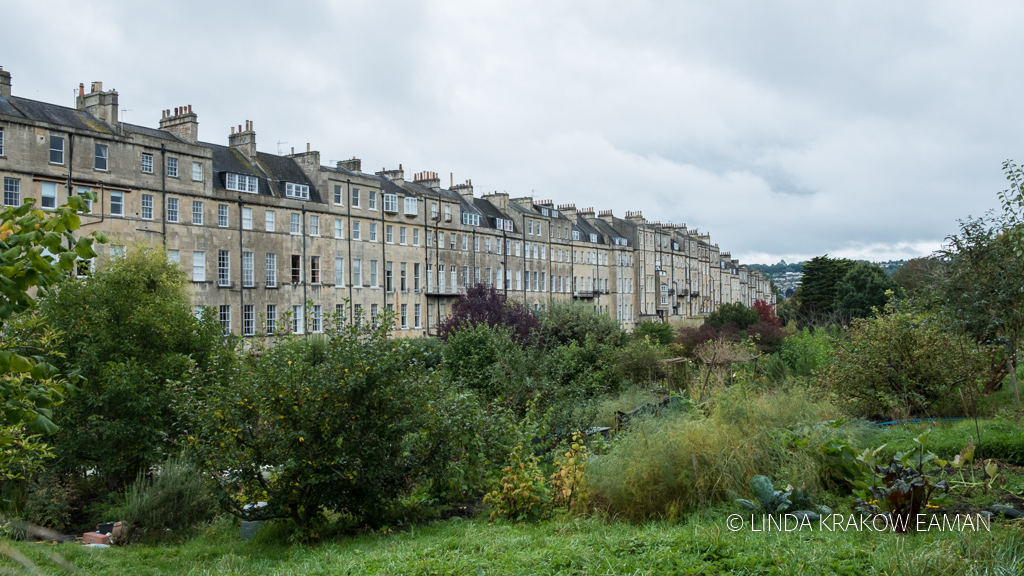
Off the beaten path… the back side of a long row of terraced houses. Notice all the chimney pots, from the days when every room had a coal burning stove. The greenery is an allotment garden–a community vegetable garden.
While I explored a cute little street, Marc checked the menu outside The Green Bird Café and was informed by the two people doing the same that it served good breakfasts and would be open any minute. Our timing was perfect, because a line quickly formed behind us; we were lucky to get a table for two, right in the middle of the action. It was the ideal spot to watch the bustle of activity, and to listen in on the conversation between two couples at tables by the window; one was relatively new to Bath, which they described as their pied-à-terre, the other operated a B&B, and they got along famously. Breakfast was delicious and we decided The Green Bird’s recent award for “best breakfast in Bath” was well earned.
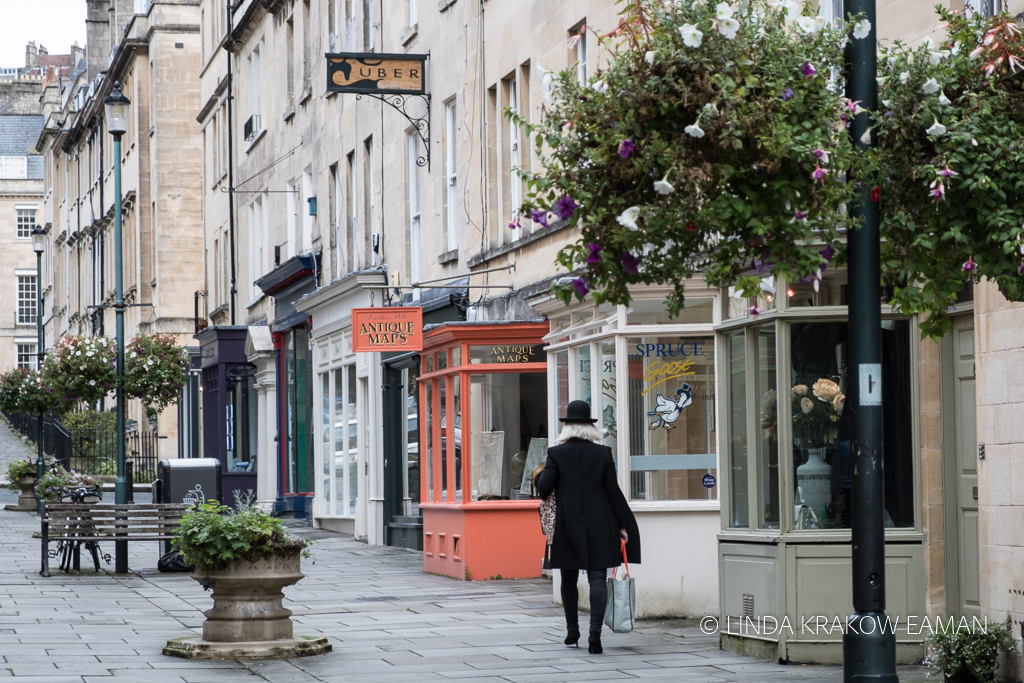
One of the quieter streets on a Sunday morning. This very stylish woman was, I think, going to open one of the shops.
There’s more to see in Bath, but the day before we had noticed a boat ride along the river Avon that included the option of stopping in the village of Bathampton–a perfect low-key way to get off the beaten path.
For part of the trip the captain was checking email on his phone while watching the river with one eye, and I thought that after so many trips hauling tourists he must have been a bit blasé about the view. But when I asked if the trees turn colour in the fall (fall was definitely in the air, and a few seemed to be just starting), he talked about how beautiful the colours and reflections would be on a sunny day. He was happy to chat about the boat, the depth of the river (shallow), the weir that we had seen (it is semi-automatic and opened three or four times a year, when the river rises about four feet due to all the rivers that feed into it), and told me about Peter Gabriel’s song Solsbury Hill and the iron age hill fort as he pointed out the actual location ahead of us.
It always pays to chat with the locals. When we debated staying on for the round trip or getting off at Bathampton, the captain told us that if it rained heavily he would not come back up the river with an empty boat so we could be marooned there. However he recommended the walk back along the canal, which we had not even realized existed. It’s a sign of Brits’ love of walking, and nonchalance about weather, that he seemed completely unconcerned about the idea of an hour’s walk in the rain. And I have been completely won over… I could happily spend a great deal of time here, tramping around the countryside. Despite the drizzly, gray day it seemed positively idyllic (although definitely not ideal for photographs). Following the deck hand’s directions, we walked off the dock, through the car park behind a pub that was once a mill, across a highway overpass, and found ourselves on a country road between the 13th century St. Nicholas Church and the St. George Inn, once a 13th century monastery but now a pub with low doorways and uneven floors, beside the canal. We walked through the outskirts of the village, to a footpath that took us past a low stone wall on the edge of a field where sheep grazed, with narrowboats moored along the canal below.
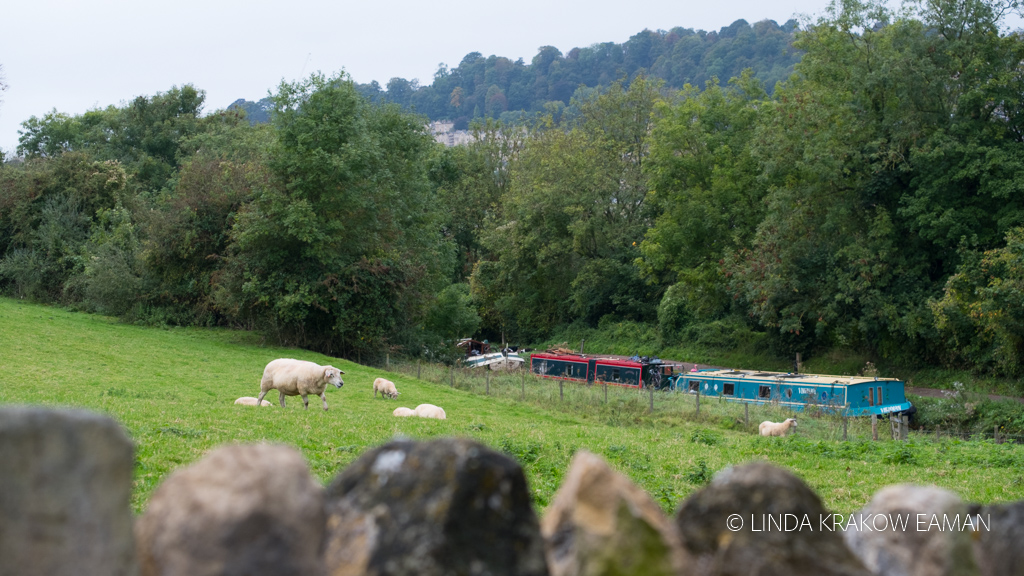
Stone wall, sheep, narrowboats on the canal. We first saw narrowboats on the Regent’s canal in London, where they seem to be used as houseboats. But we have since discovered that they are also used as pleasure boats to explore canals throughout the country.
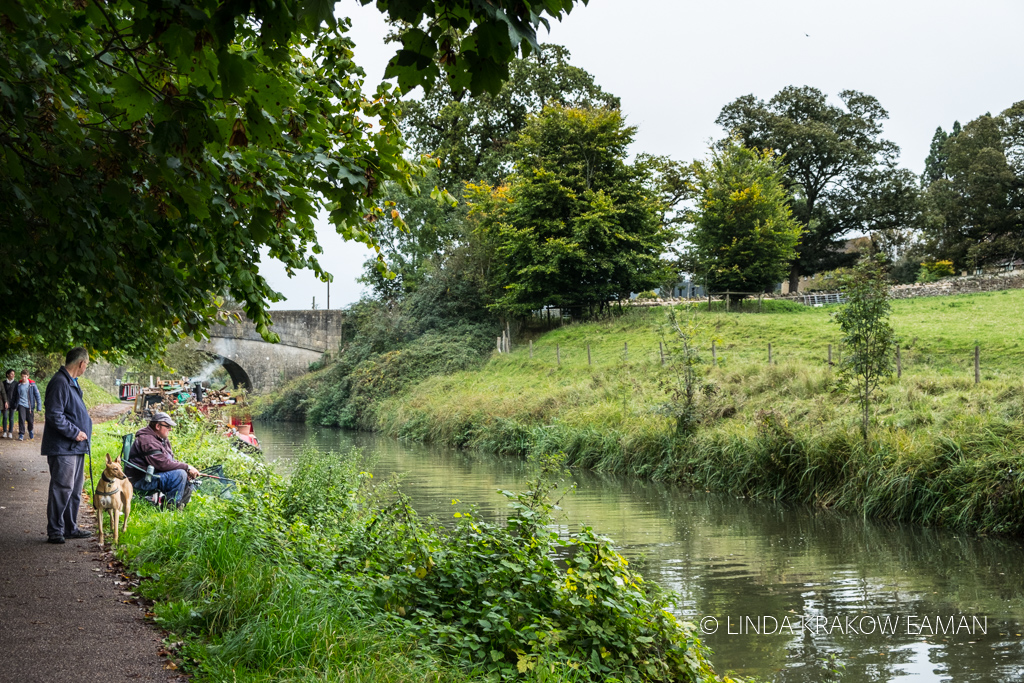
When I joked that the greyhound was taking the man for a walk, he laughed and told me that sometimes she makes him walk all the way to the pub in town!
It was almost a disappointment to leave the path, but the Sydney Gardens at least provided a gradual transition back to the city. What to do after a long walk on a gray day? Have lunch in a pub, of course. And even better, Sunday is roast day in the pubs. It’s comfort food in a warm, cozy setting. Some of them, including this one, even have nut roasts–sort of a nut-based vegetarian meatloaf–that still come with all the fixings including Yorkshire pudding.
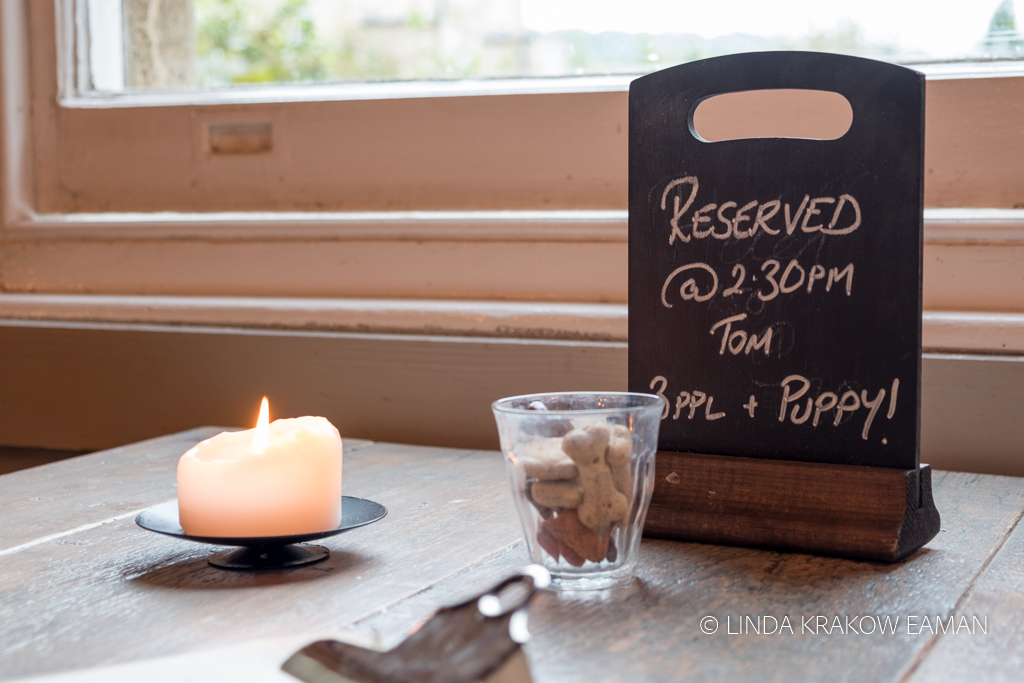
We arrived at 2:00, and spent the next 45 minutes waiting hopefully for this party to arrive at the table behind us. I couldn’t have been happier when a four month old black lab eagerly led her people to the table and stopped for some pets and puppy kisses!
From there, back to the train… and just two hours later, we emerged from the London underground into the urban jungle. Was it all a dream?
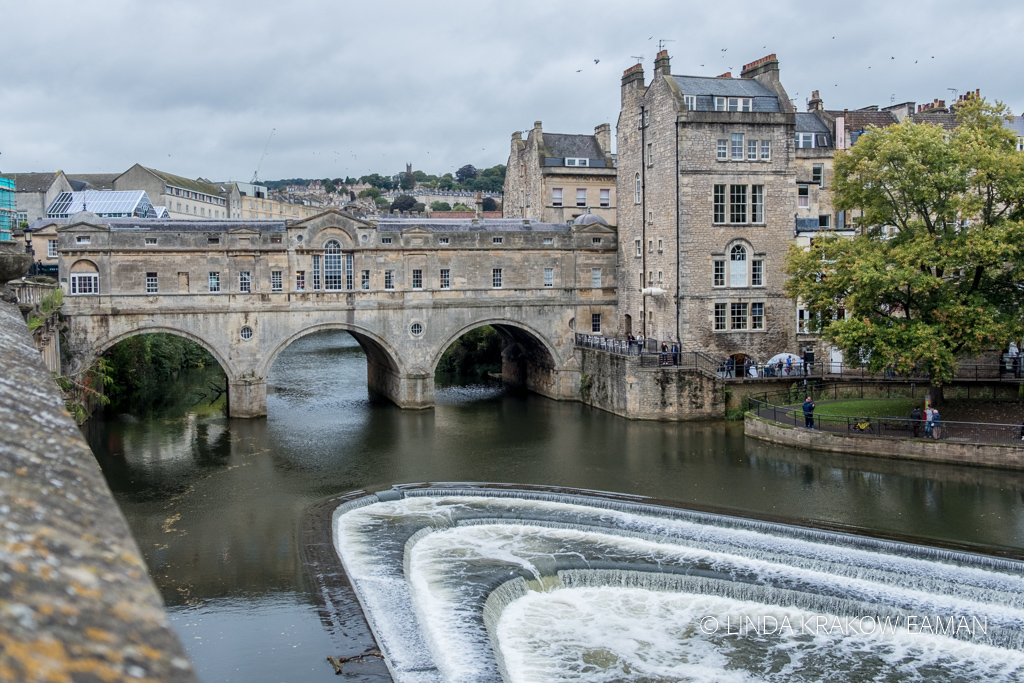
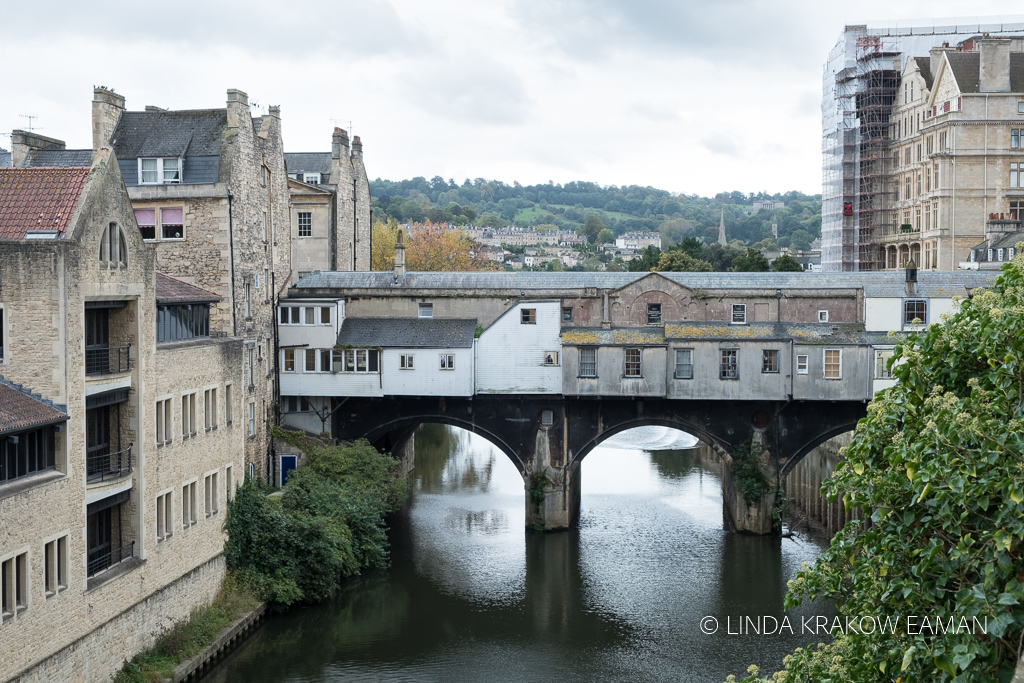
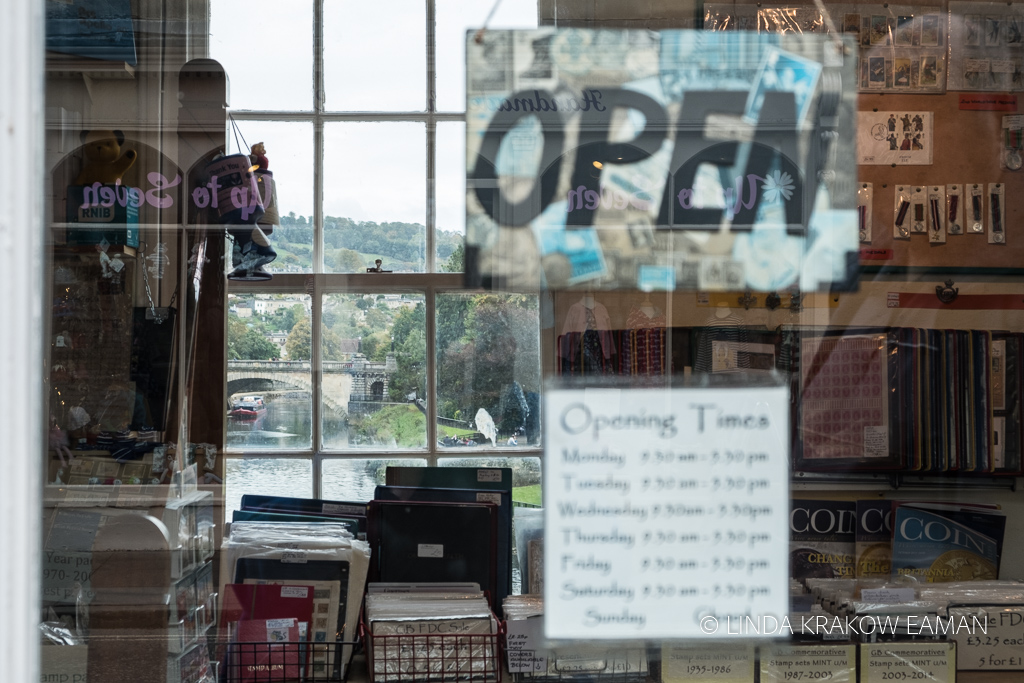
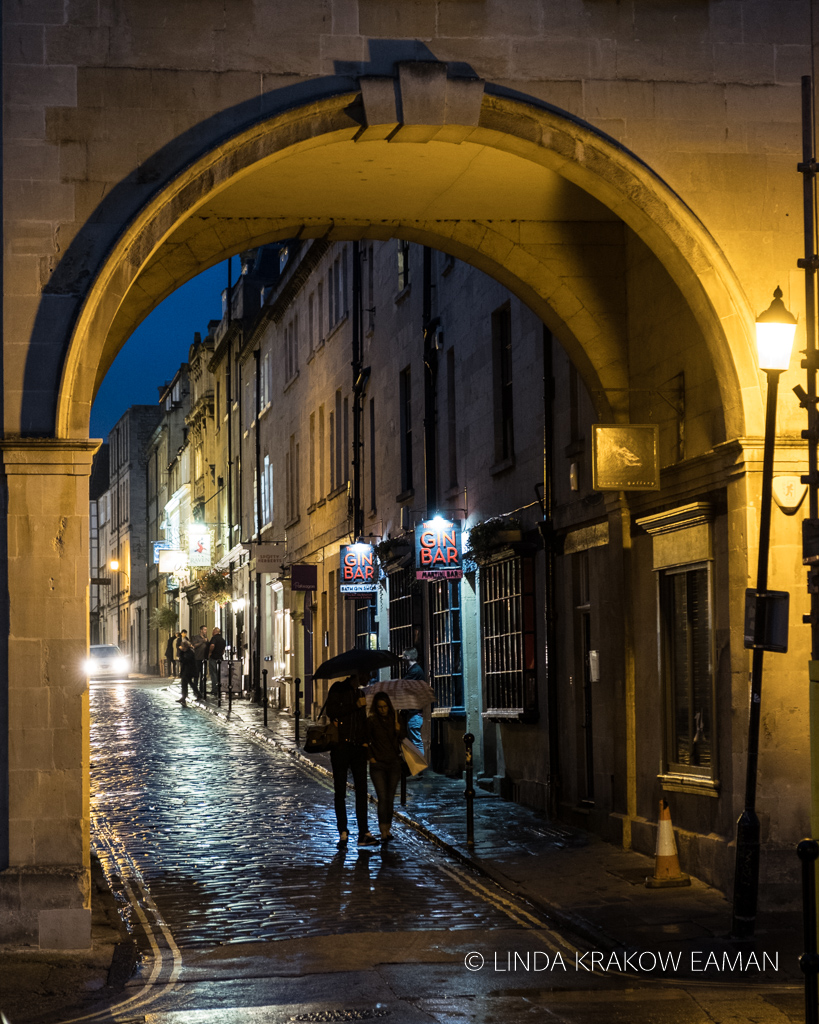
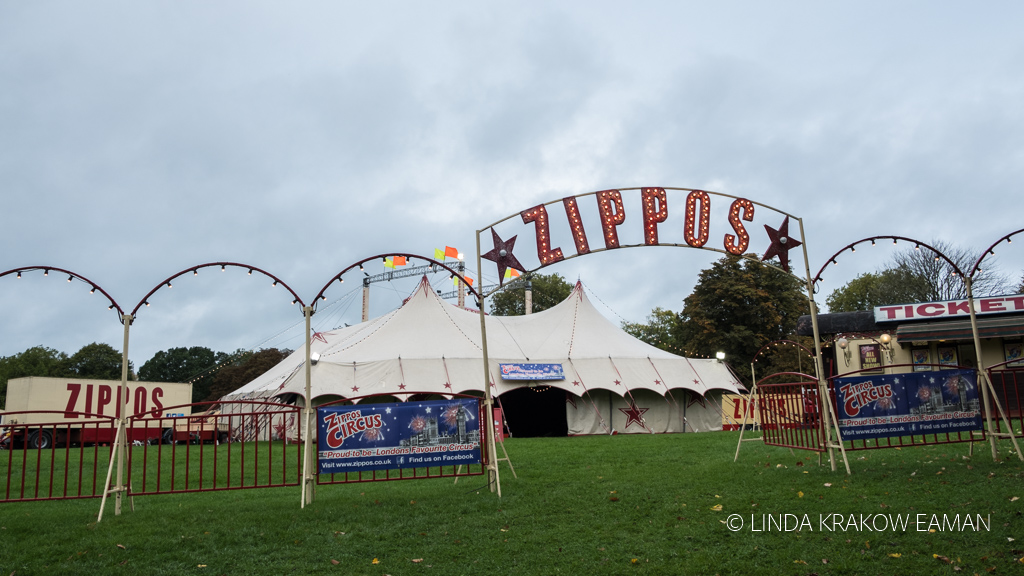
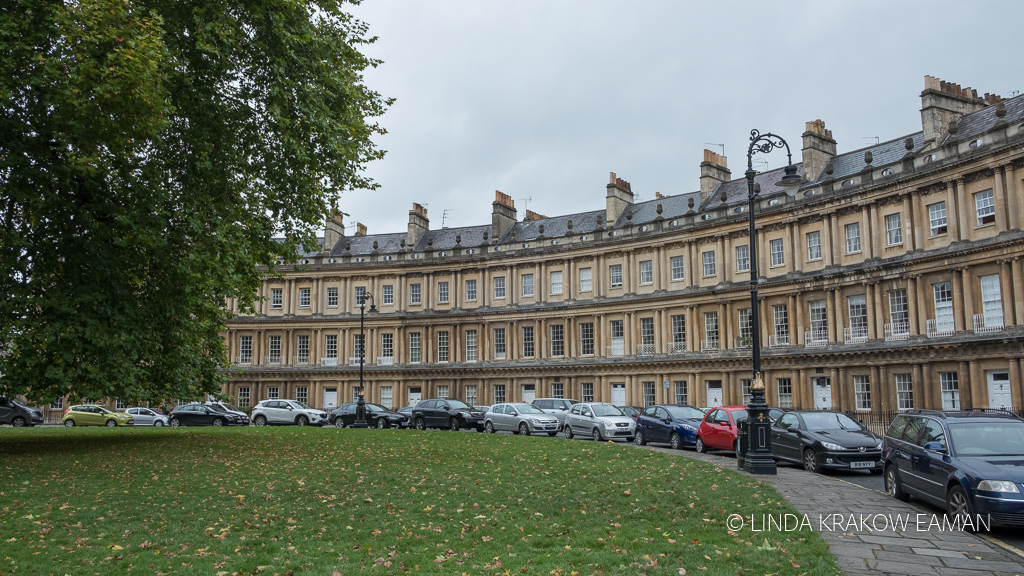
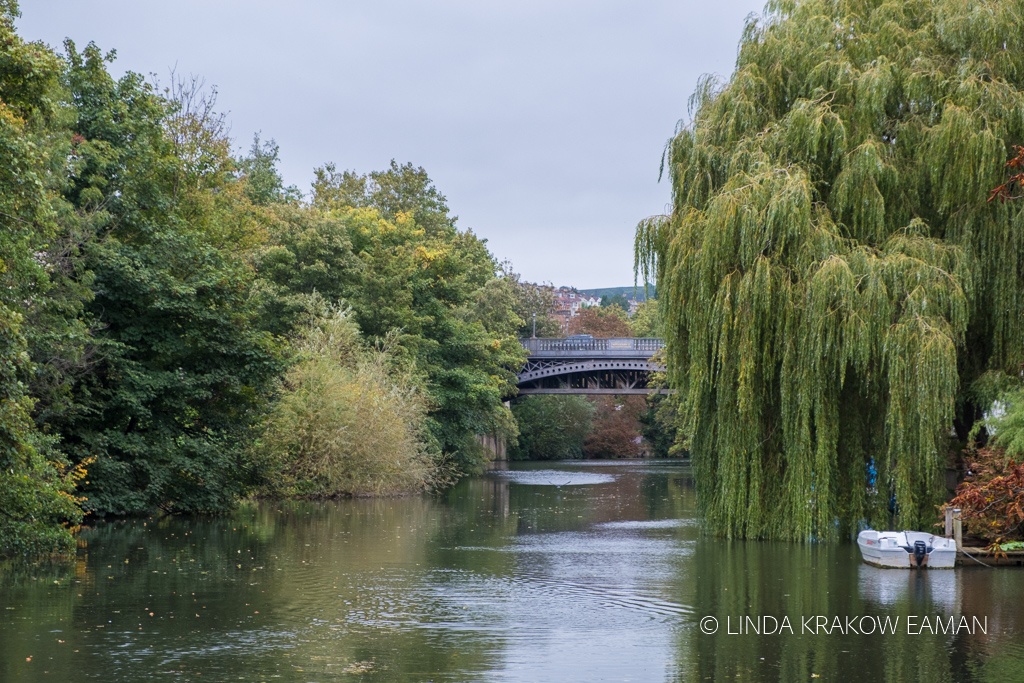
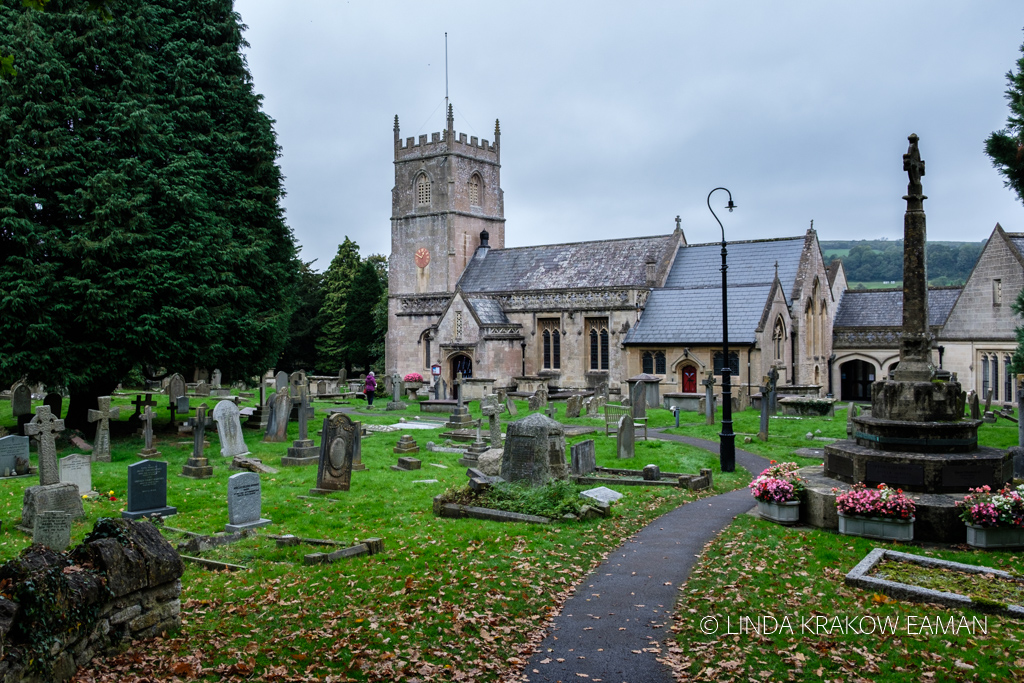
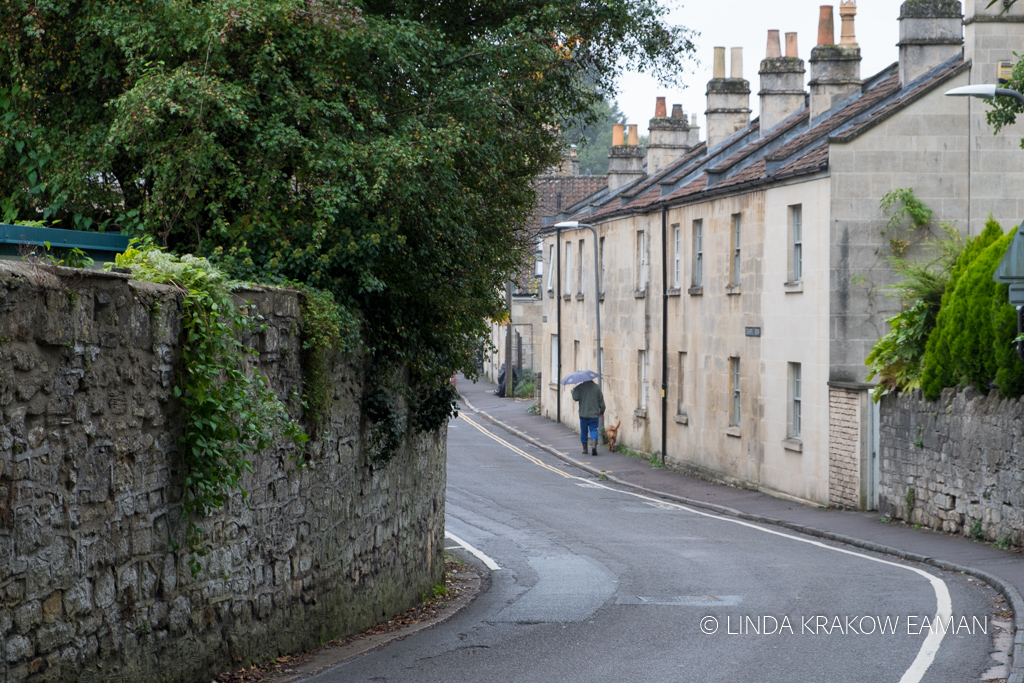
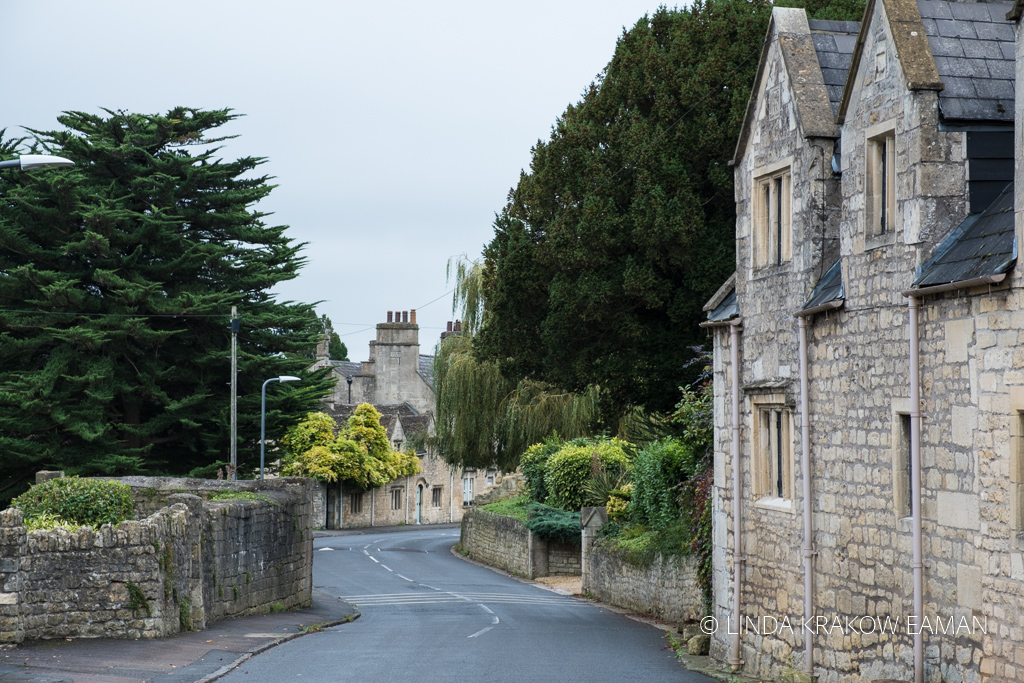
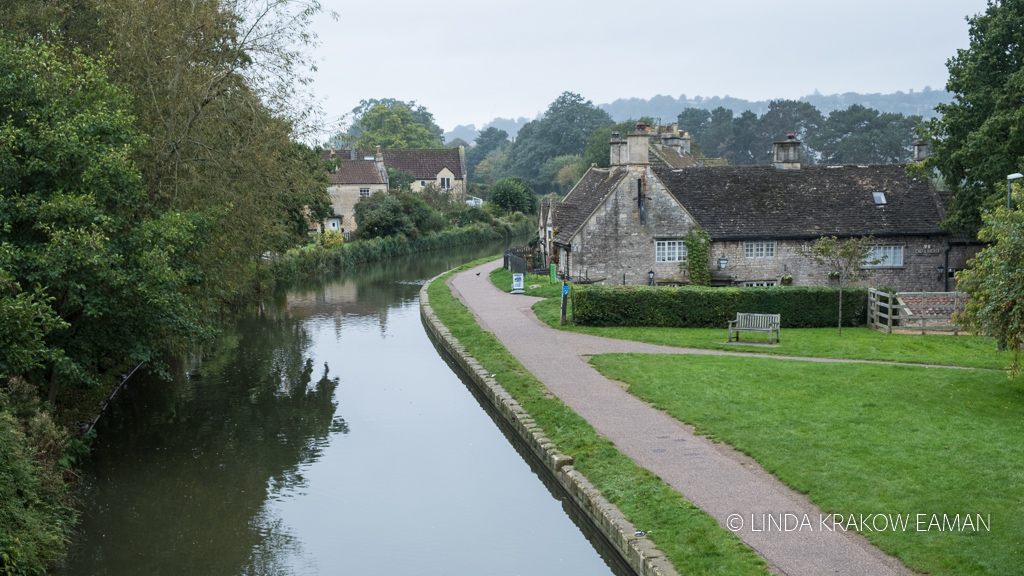
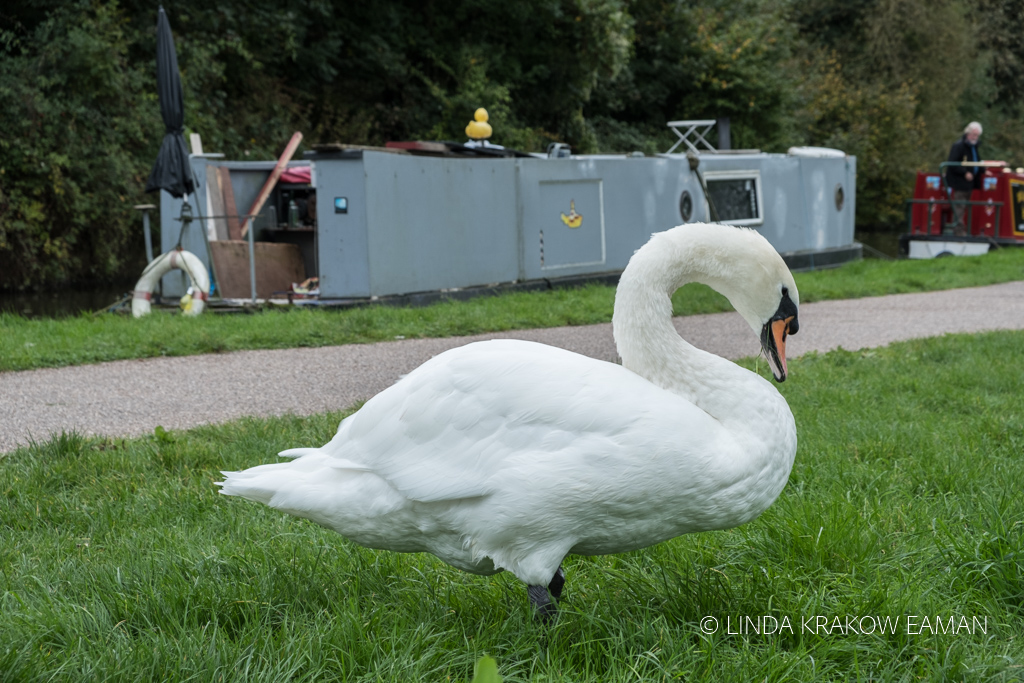
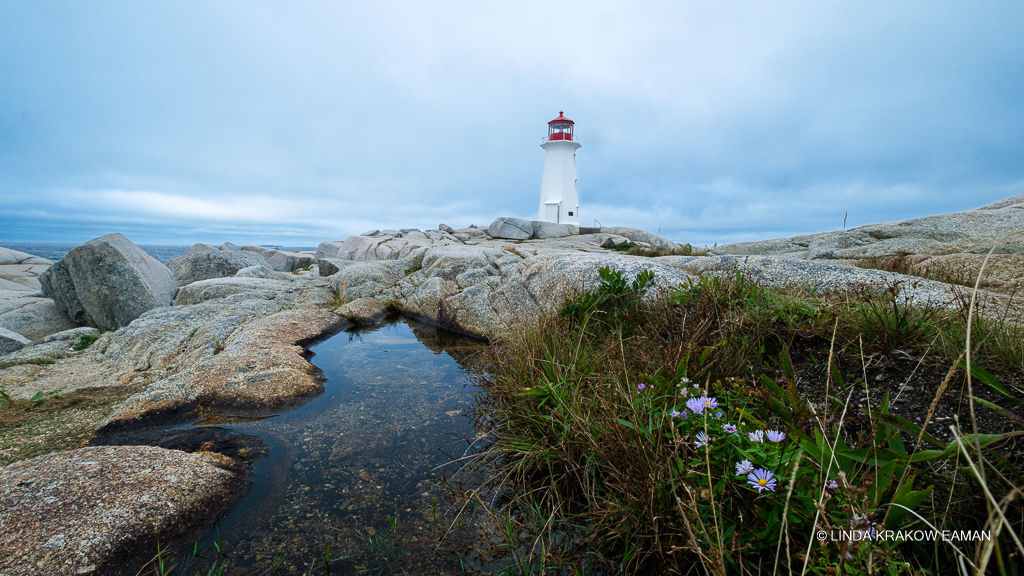

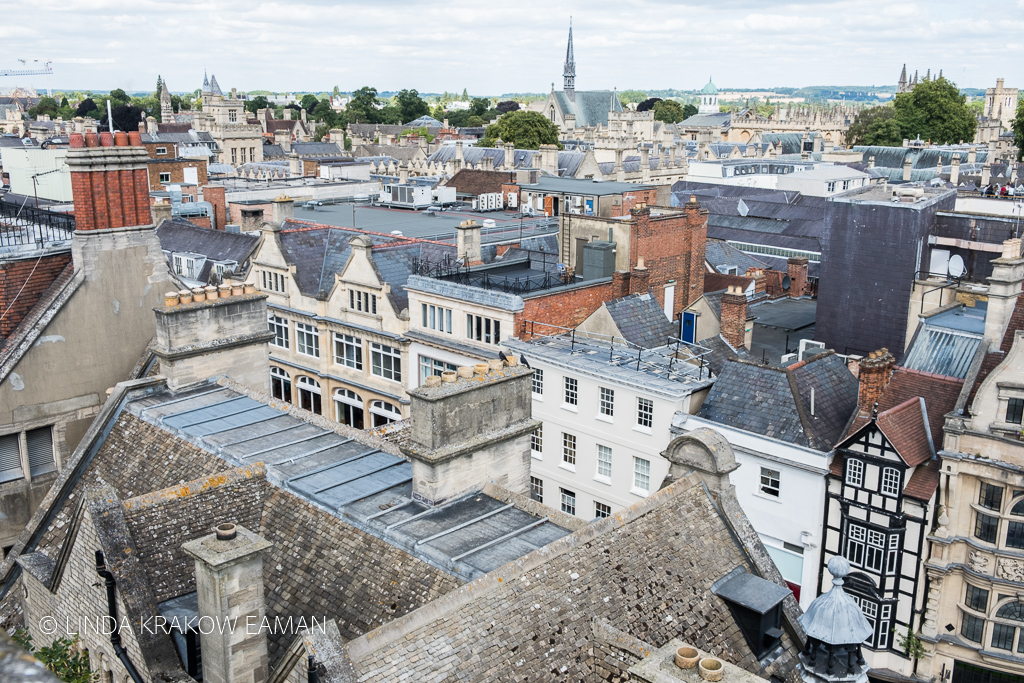
Love that last photo, Linda! Beautiful postcard pictures. I have a suggestion for grey weather: take portraits! I would love to see a close-up of those puppy kisses or that guy with his greyhound…
That’s a great thought. I will keep it in mind!
Wonderful post, Linda. You’re writing is so evocative! Your photos were excellent! I especially liked the way you framed the one with the greyhound. Such a lovely place. As luck would have it, Rick Steve’s show on PBS tonight was on Bath and York.